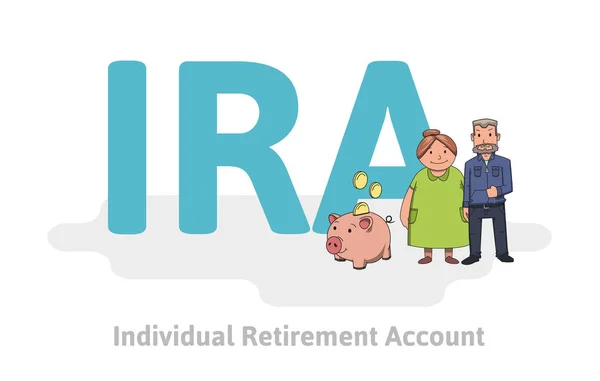Highlights
- By mid-2023, 55.5 million U.S. households owned IRAs, showcasing their popularity for retirement savings.
- Traditional IRAs now provide tax deductions on contributions but are taxed upon retirement withdrawals.
- After paying taxes upfront on contributions, Roth IRAs allow tax-free withdrawals in retirement.
- Choosing between an IRA and a taxable account depends on your financial goals, tax situation, and need for flexibility.
Around 60% of U.S. households own securities, usually through taxable accounts, IRAs, or employer-sponsored retirement plans. However, this falls to just over 30% when considering only taxable investments.
When it comes to investing, one of the most important decisions you’ll make is choosing the right account. Two of the most popular options are the IRA vs taxable account. But which one is best for you?
In this guide, we’ll break down the differences between a Roth IRA vs taxable account, explore the pros and cons of each, and help you determine the right choice for your financial future.
What Is an IRA?

An Individual Retirement Account (IRA) is a tax-advantaged account that helps you save for retirement. According to ICI’s latest research, in mid-2023, 55.5 million U.S. households owned individual retirement accounts (IRAs).
IRAs have 2 types: Traditional IRAs and Roth IRAs.
- Traditional IRA: You get a tax deduction for contributions now, but retirement withdrawal is taxed as ordinary income.
- Roth IRA: Contributions are taxed upfront, but retirement withdrawals are tax-free, making it an attractive option for many investors.
What Is a Taxable Investment Account?
A taxable account, also known as a brokerage account, offers no tax advantages but gives you flexibility. According to research, 34% of households with taxable accounts earn $100,000 or more, compared to 15% with only retirement accounts and 3% without investment accounts.
Unlike an IRA, you can invest as much as you want and access your funds anytime without penalties. The trade-off is that you will pay taxes on dividends, interest, and capital gains.
In a Roth IRA vs taxable account, the key distinction is how taxes are handled. While the Roth IRA offers tax-free withdrawals in retirement, a taxable account requires you to pay taxes as you go but provides more immediate access to your funds.
How Do Taxes Work in an IRA vs Taxable Account?
Taxes play a major role in the decision between an IRA vs taxable account. Let’s look at how they differ:
- Traditional IRA: Contributions are tax-deductible now, but withdrawals are taxed as income later.
- Roth IRA: With Roth IRAs, contributions are made after-tax dollars, but withdrawals are tax-free.
- Taxable Account: You pay taxes on any dividends, interest, or capital gains annually. Long-term capital gains are usually taxed lower than ordinary income, which can be a benefit.
What Are the Contribution Limits?

Another major difference between an IRA vs taxable account is the contribution limits.
- Traditional and Roth IRAs: As of 2024, the maximum contribution is $6,500 per year (or $7,500 if you’re 50 or older).
- Taxable Accounts: There are no contribution limits. This flexibility allows you to invest large sums of money, making it better for high earners or those seeking to grow wealth aggressively.
How Much Flexibility Do You Need?
One of the biggest considerations when deciding between a Roth IRA vs taxable account is flexibility. Do you need access to your money before retirement?
- IRAs: Traditional and Roth IRAs come with early withdrawal penalties if you take money out before age 59½. Roth IRAs, however, allow you to withdraw contributions (not earnings) penalty-free at any time, making them slightly more flexible.
- Taxable Accounts: You may access your money anytime without penalties, giving you complete freedom over your investments.
Are There Required Minimum Distributions (RMDs)?
Required Minimum Distributions (RMDs) are mandatory withdrawals from certain retirement accounts once you reach age 73.
- Traditional IRA: You can start taking RMDs at 73, even if you don’t need the money.
- Roth IRA: Roth IRAs don’t have RMDs, which means your money can keep growing tax-free for as long as you want.
- Taxable Accounts: There are no distribution requirements, so you can sell or withdraw funds whenever you want.
Can I invest in any of these options?

Both IRAs and taxable accounts allow you to invest in different assets like stocks, bonds, ETFs, and mutual funds. However, taxable accounts often offer more flexibility in your investments.
- IRAs: Some institutions may limit your investment choices, especially if you invest through a workplace 401(k) or similar retirement plan.
- Taxable Accounts: You can invest in various assets, including individual stocks, bonds, ETFs, mutual funds, real estate, and more.
When Should You Prioritize an IRA or a Taxable Account?
Choosing between a Roth IRA vs taxable account depends on your financial goals and needs. Here are a few questions to help you decide:
- Do you want tax benefits for retirement savings?
If you’re primarily focused on saving for retirement and want tax advantages, an IRA (Traditional or Roth) is the way to go.
- Do you want flexibility?
A taxable account gives you more flexibility to access your money when you need it without penalties, making it a better option for short-term goals or mid-life expenses.
- Are you in a high tax bracket?
If you’re in a high tax bracket and want to be in a lower one during retirement, a Traditional IRA offers immediate tax savings. However, if you expect to be in a higher tax bracket later, a Roth IRA allows you to lock in today’s tax rate and avoid higher taxes on future withdrawals.
- Do you plan to invest large amounts?
Since taxable accounts have no contribution limits, they help people looking to invest large sums of money, making them a great supplement to retirement accounts.
Summary
Deciding between an IRA vs taxable account ultimately comes down to your financial goals, tax situation, and need for flexibility. If you’re focused on retirement savings and want to take advantage of tax breaks, an IRA is a strong option. On the other hand, if you value flexibility and want to invest without restrictions, a taxable account is a great choice. Many investors find that combining both can help them maximize their investment potential while preparing for a secure financial future.
Disclaimer
The content provided on this blog is for informational and educational purposes only and does not constitute financial or investment advice. While we strive to provide accurate and up-to-date information, you should not rely on this content as a substitute for professional financial advice. Any financial decisions you make are done so at your own risk, and we encourage you to consult with a licensed financial advisor before making any investment decisions.
The views and opinions expressed in this blog are solely those of the authors and do not necessarily reflect the views of any affiliated entities. The information presented here is not intended as a solicitation or recommendation to buy, sell, or hold any financial product.


